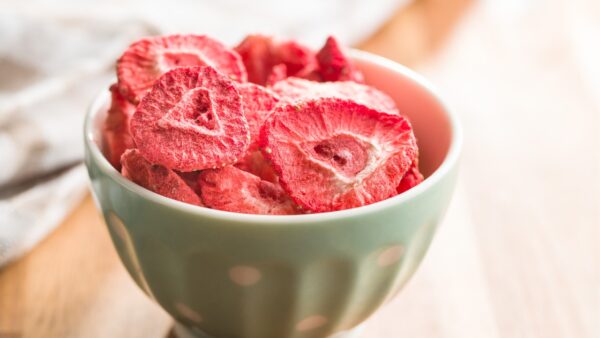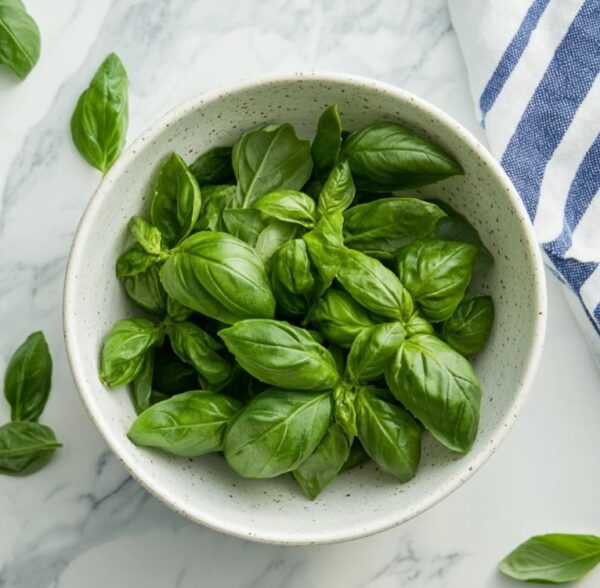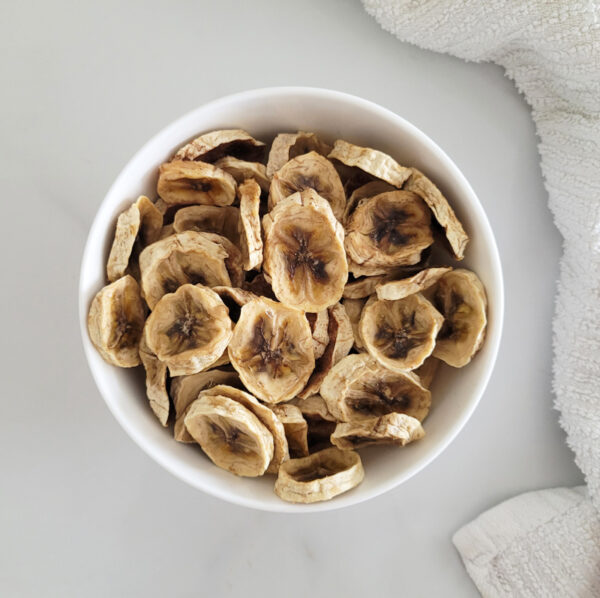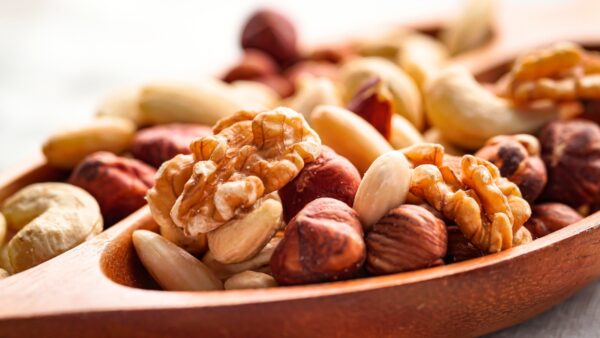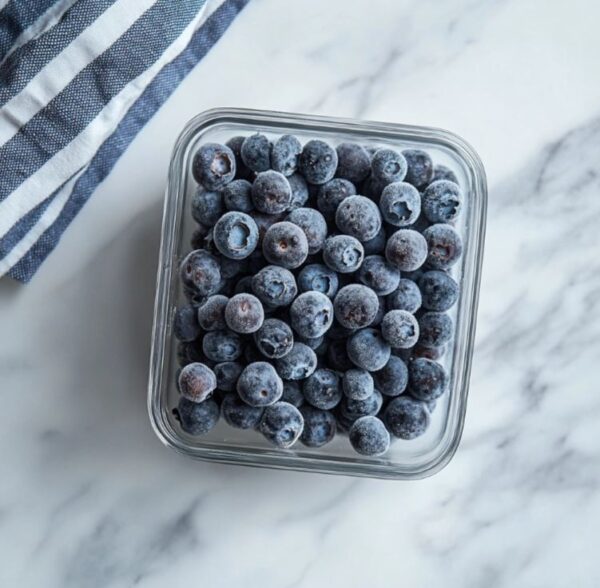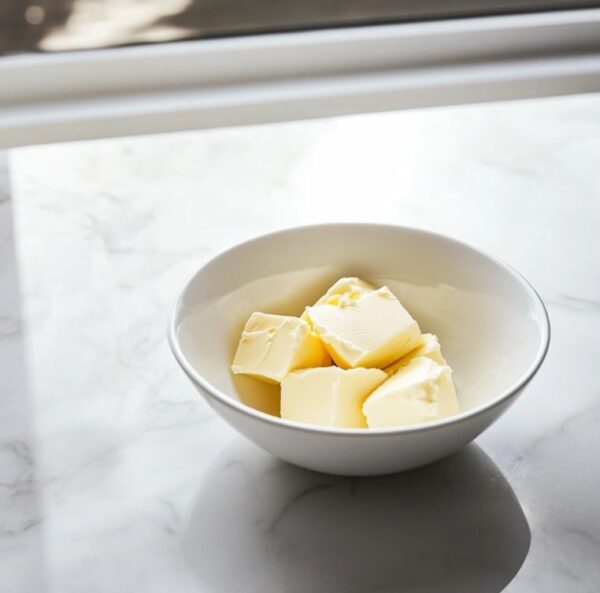All About Mangoes: Top Varieties, Storage, Uses & More 🥭
If you’ve ever found yourself standing in the produce aisle, eyeing a display of vibrant mangoes and wondering which one to pick, you’re not alone. We are excited to tell you about mangoes in this mango guide.
Mangoes have earned their popularity for more than just their irresistibly sweet taste. Their versatility steals the show – whether you’re slicing them for a refreshing snack, blending them into a tropical smoothie, or adding a burst of flavor to savory dishes.
Practical, nutritious, and easy to incorporate, mangoes bring a touch of the exotic to everyday meals. With a rich vitamin and antioxidant profile, they not only satisfy your sweet cravings but also contribute to a healthy, well-rounded diet.
But fear not! This guide is here to demystify the mango, offering practical tips and insights that will turn you into a mango-savvy connoisseur.
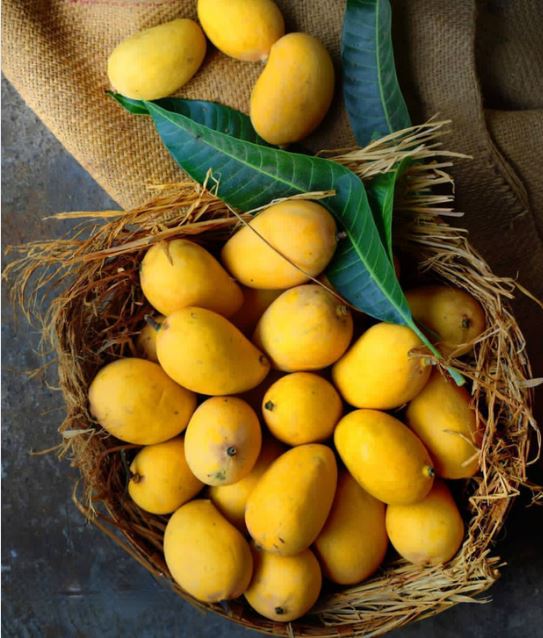
From deciphering the subtle signs of ripeness to navigating the array of varieties, we’ll walk you through the ins and outs of choosing the perfect mango.
Whether you’re a seasoned mango enthusiast or a curious newcomer, our goal is to make your mango experience not only delicious but downright satisfying.
So, grab a shopping bag, sharpen your knife skills, and get ready to embark on a journey into the world of mangoes.
Let’s explore how to pick, ripen, and savor these golden treasures, transforming your next mango moment from a guessing game to a sweet success.
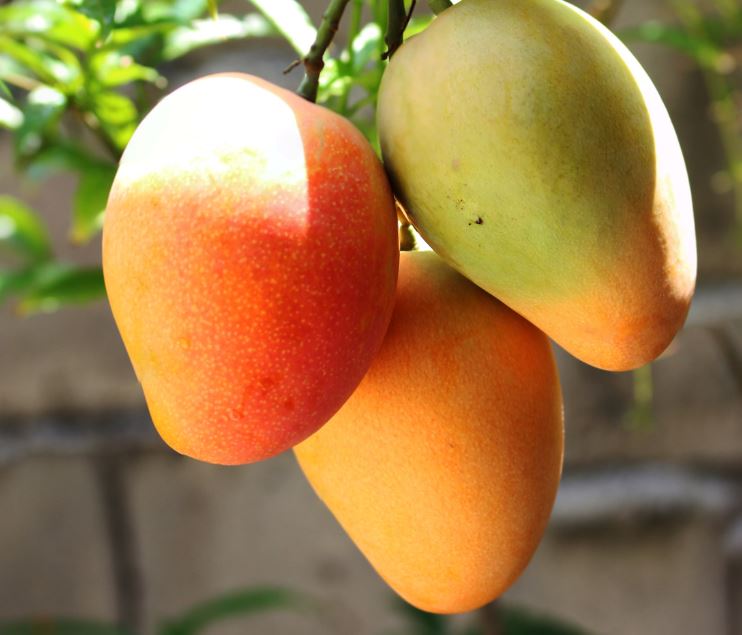
Mango Guide
History & Origin Of Mangoes
Mangoes have a fascinating history that traces back thousands of years. These juicy delights are believed to have originated in South Asia, with their roots reaching into India and Myanmar.
Over time, mangoes journeyed across the globe through trade routes, making their way to various parts of Asia, the Middle East, and eventually spreading to Africa and the Americas.
From the ancient courts of India to the markets of Persia, mangoes became a prized delicacy. European explorers encountered mangoes during their voyages, marveling at the exotic flavors of this tropical fruit.
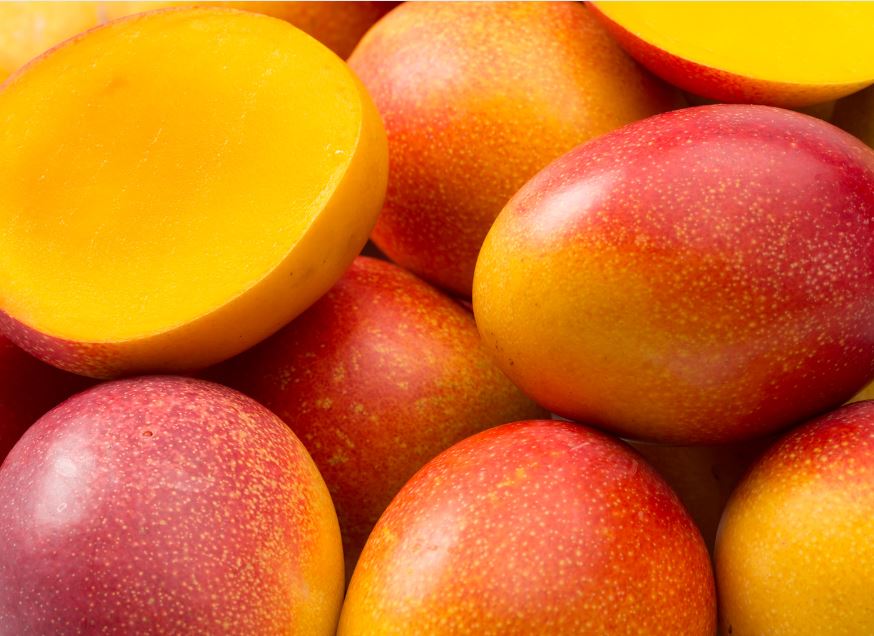
The Portuguese are credited with introducing mangoes to the Americas, where they found a welcoming climate in countries like Brazil and Mexico.
Today, mangoes are enjoyed globally, transcending cultural boundaries. Their journey from the lush orchards of South Asia to your local grocery store is a testament to the rich history and widespread appreciation of this delectable fruit.
Mango Harvesting Season
The mango harvesting season varies depending on the region and the specific variety of mango.
In general, mangoes are typically harvested during the late spring to summer months, with peak harvesting occurring between March and July in many tropical and subtropical regions.
The precise timing can be influenced by factors such as climate, geography, and local growing conditions.
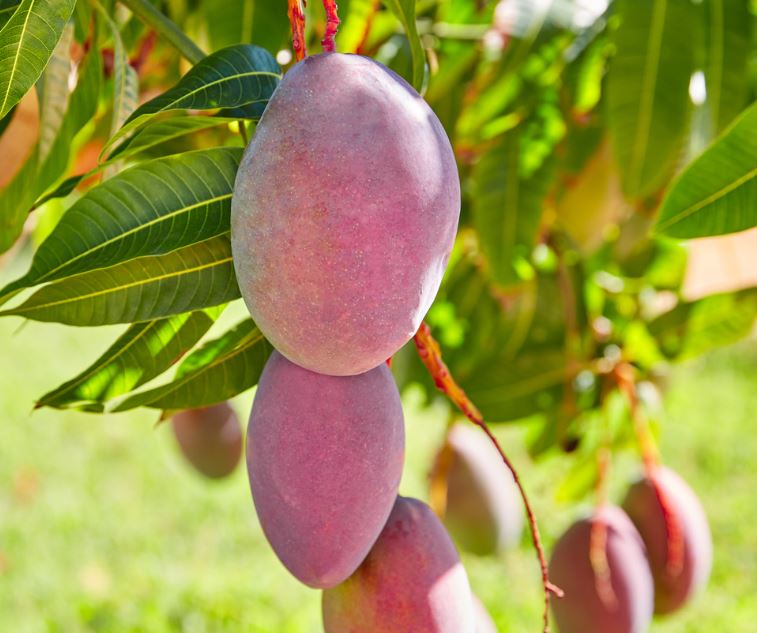
Harvesting is done when the mangoes have reached optimal ripeness on the tree. Skilled harvesters use long poles with a harvesting tool at the end to carefully pluck the fruit without damaging it.
The harvested mangoes are then sorted, cleaned, and prepared for distribution to local markets or for export, ensuring that consumers can enjoy fresh and flavorful mangoes during the peak of their ripeness.
Most Popular Mango Varieties
Keep in mind that the popularity of mango varieties can change, and there may be new developments in the mango market. It’s a good idea to check with local markets or growers for the most current information on popular mango varieties.
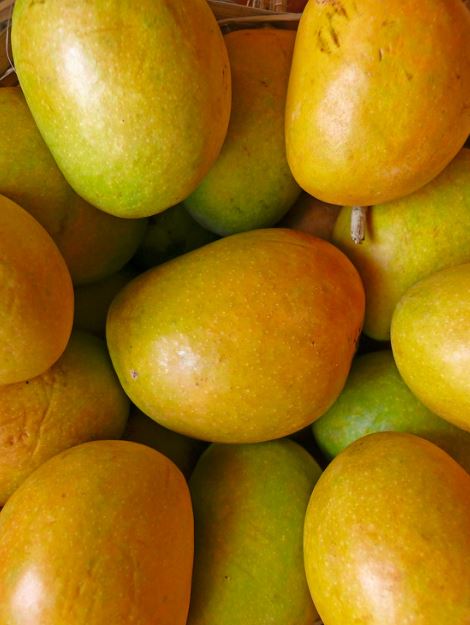
1. Alphonso Mango:
Alphonso, often hailed as the “King of Mangoes,” originates from the lush orchards of India, particularly in the region of Maharashtra.
Revered for its regal sweetness, unmistakable aroma, and smooth, non-fibrous texture, the Alphonso mango is a culinary delight.
Its saffron-colored flesh and rich taste make it a sought-after variety globally, earning it a top spot among mango enthusiasts.
2. Haden Mango:
The Haden mango, born in the sun-drenched groves of Florida, USA, stands out with its vibrant red and yellow skin.
Among the earliest varieties available in the season, Haden mangoes are celebrated for their perfect balance of sweetness and tanginess.
The juicy, fiber-free flesh and tropical flavor make them a popular choice for for recipes and cooking.
3. Kent Mango:
With origins in Florida, Mexico, Ecuador, and Peru, the Kent mango has earned its place as a favorite among mango aficionados.
This large-sized mango boasts a sweet and mildly fruity flavor, complemented by its non-fibrous flesh.
Its versatility shines through, whether enjoyed fresh or used in various culinary creations, making it a go-to choice for mango lovers.
4. Tommy Atkins Mango:
The Tommy Atkins mango is a global contender, widely cultivated and appreciated for its robust flavor.
With its distinctive red blush set against a green or orange background, this mango variety is visually striking.
Its firm texture and a delightful mix of sweetness make it suitable for a range of culinary applications, from fresh consumption to cooking.
The variety of mangoes most commonly found in grocery stores can vary depending on the region and the time of year. However, the frequently encountered variety is the Tommy Atkins mango.
5. Ataulfo (Honey or Champagne) Mango:
Originating from Mexico, the Ataulfo, also known as Honey or Champagne mango, is a small, golden-yellow gem with a creamy texture.
This mango variety is prized for its exceptionally sweet and slightly tangy taste.
Often enjoyed fresh or blended into refreshing smoothies, the Ataulfo mango brings a tropical touch to the table, enticing taste buds with its unique flavor profile.
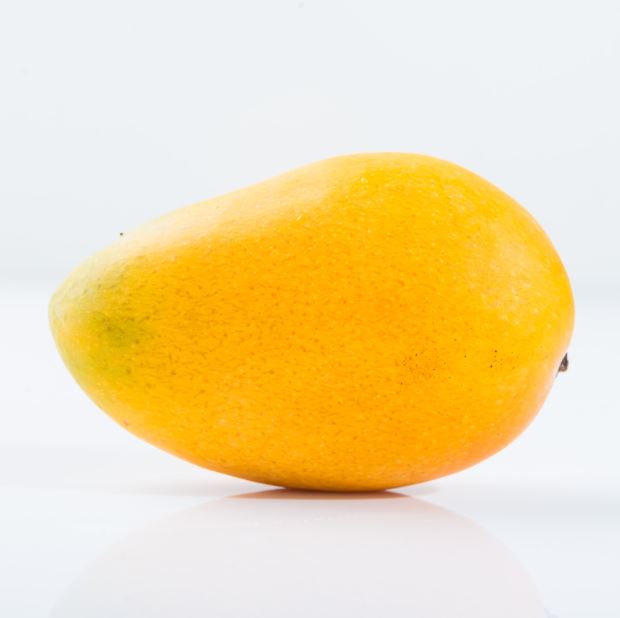
The Nutritional Value Of Mangoes
The nutritional value of one mango can vary based on its size and variety. However, here’s a general overview of the nutritional content in a medium-sized mango (about 200 grams or 1 cup of diced mango). Values are derived from the USDA Food Data Central
- Calories: Approximately 60-70 calories.
- Protein: About 1 gram.
- Carbohydrates: Around 15 grams, primarily from natural sugars.
- Dietary Fiber: Approximately 3 grams, aiding in digestion.
- Fat: Almost negligible, typically less than 0.5 grams.
- Vitamin C: A significant source, providing over 60% of the daily recommended intake.
- Vitamin A: Contributing to about 15% of the daily recommended intake.
- Vitamin E: Offering a small amount of this antioxidant vitamin.
- Vitamin K: Providing a modest amount.
- Potassium: Around 200-250 milligrams.
- Folate: A small but notable contribution to this B-vitamin.
- Other Micronutrients: Trace amounts of vitamins like B6, niacin, riboflavin, and minerals such as copper and manganese.
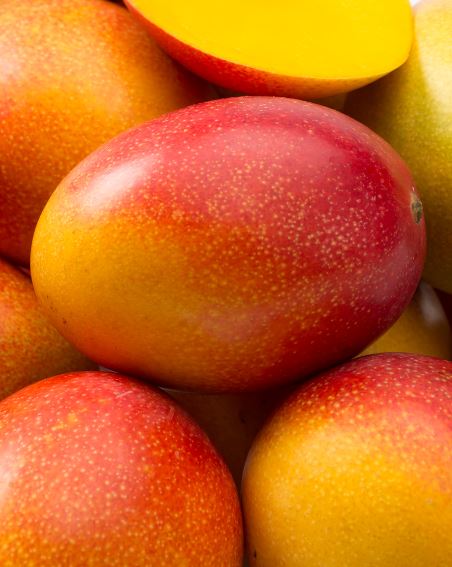
Health Benefits Of Eating Mangoes
Mangoes aren’t just a tropical delight for your taste buds; they pack a nutritional punch that makes them a healthy addition to your plate. Rich in essential vitamins, minerals, and antioxidants, these golden fruits offer some great benefits.
1. Vitamins:
Mangoes are particularly rich in vitamin C, which is vital for a robust immune system. A single serving can contribute a significant portion of your daily vitamin C needs.
2. Minerals:
In the mineral department, mangoes provide potassium, an electrolyte that supports proper hydration and muscle function.
This can be especially beneficial for those on the move, helping to replenish essential minerals lost during physical activity.
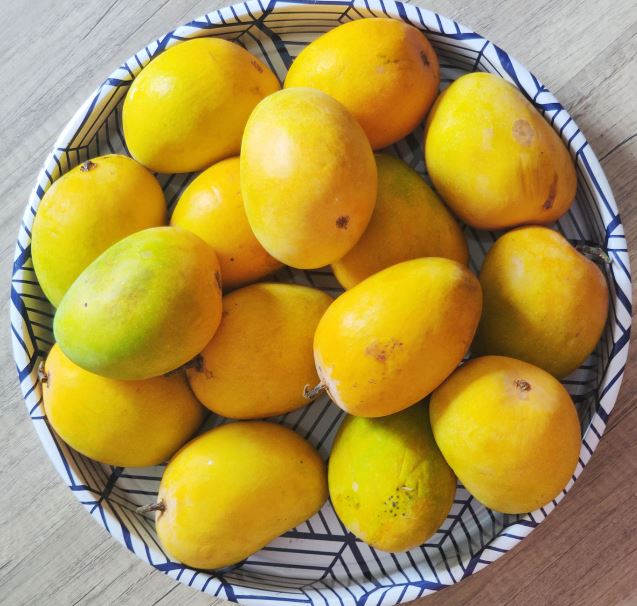
3. Antioxidants:
Antioxidants, such as beta-carotene and various polyphenols found in mangoes, play a crucial role in neutralizing harmful free radicals in the body.
This antioxidant arsenal can contribute to overall well-being and help combat oxidative stress.
4. Digestive Aid:
Mangoes are a good source of dietary fiber, which supports a healthy digestive system. Including mangoes in your diet can help promote gut health, making them a practical choice for maintaining digestive balance.
5. Eye Health:
Loaded with vitamin A, mangoes contribute to maintaining healthy vision. The presence of lutein and zeaxanthin further supports eye health.
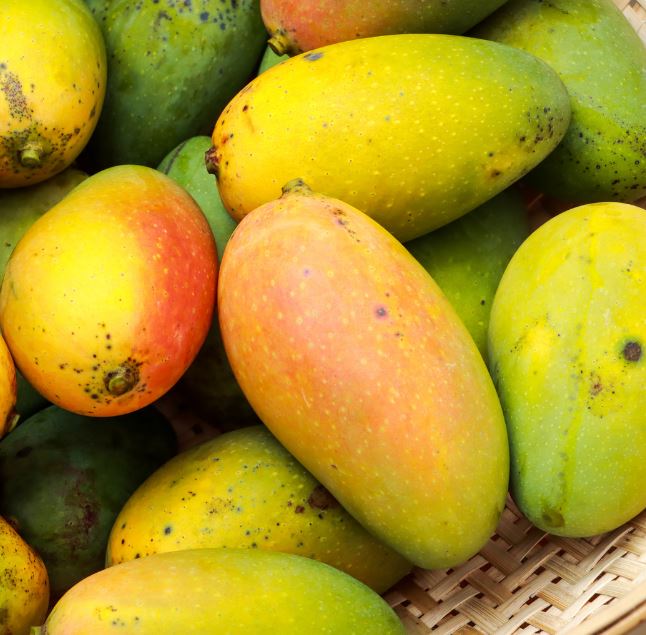
6. Heart Health:
The potassium content in mangoes, coupled with their fiber and antioxidant components, contributes to heart health.
These factors may help regulate blood pressure and cholesterol levels, promoting cardiovascular well-being.
7. Energy Boost:
The natural sugars in mangoes, including fructose and glucose, provide a quick energy boost. Whether as a pre-workout snack or a mid-afternoon pick-me-up, mangoes offer a tasty and practical way to refuel.
So, the next time you savor a juicy slice of mango, know that you’re not just treating your taste buds – you’re nourishing your body with a wealth of essential nutrients that contribute to your overall health and vitality. Source: WebMd
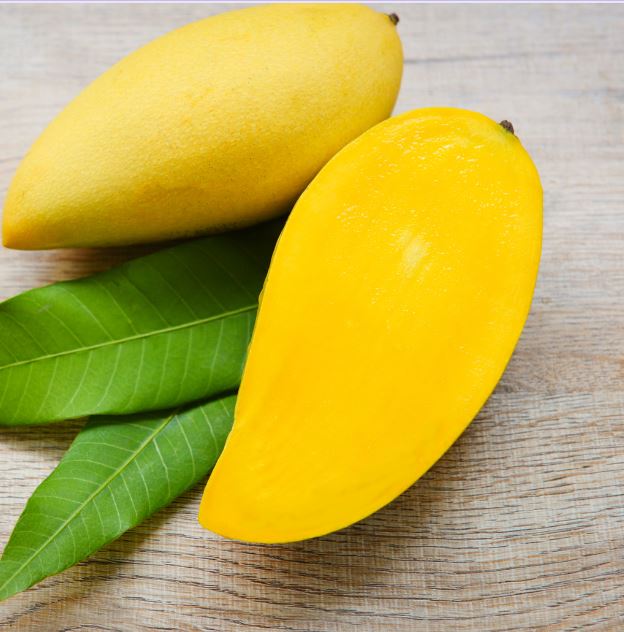
How To Choose A Ripe Mango
Choosing a ripe mango at the store involves using your senses to assess its ripeness. Here are some things to look for.
1. Color:
Look for a mango with vibrant colors. The specific hues depend on the variety, but a ripe mango generally has a rich, fruity aroma and skin color that is a good indicator of its ripeness.
2. Texture:
Gently press the mango with your fingertips. A ripe mango will yield slightly to pressure but should not be too soft.
Avoid mangoes that are overly mushy or have bruises, as these may indicate overripeness or damage.
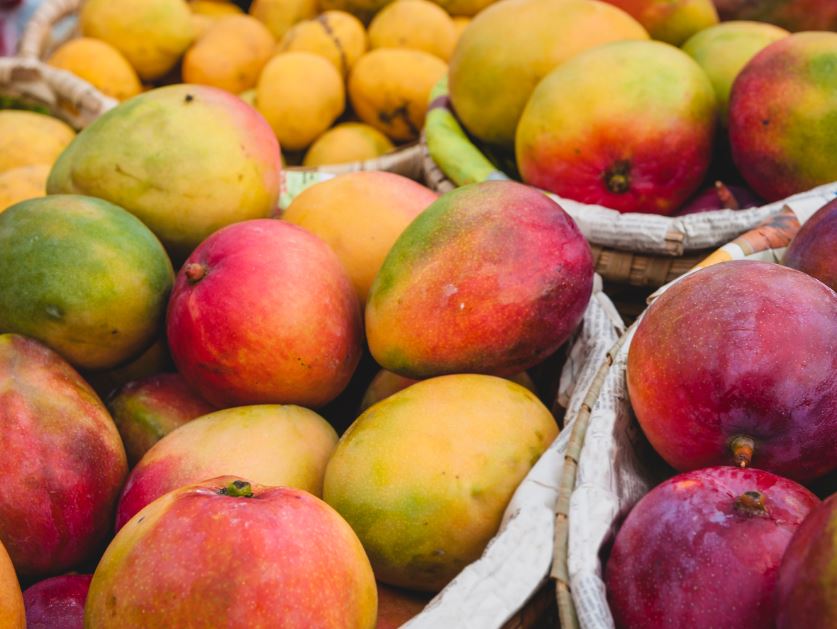
3. Shape:
Assess the shape of the mango. A ripe mango is typically plump and rounded, with a full appearance. Avoid mangoes with wrinkles or flat areas, as these may indicate dehydration or uneven ripening.
4. Smell:
Bring the mango close to your nose and inhale. A ripe mango has a sweet and fruity aroma at the stem end. If it smells fragrant, it’s likely ripe.
5. Feel for Weight:
Hold the mango in your hand and gauge its weight. A ripe mango should feel heavy for its size, indicating juiciness.
What To Avoid When Choosing A Mango
When selecting mangoes, avoid certain signs that may indicate poor quality or overripeness.
Steer clear of mangoes with visible bruises, soft spots, or wrinkled skin, as these can be indicative of damage or spoilage.
Additionally, avoid mangoes with a strong fermented or alcoholic smell at the stem end, as this might suggest overripeness.
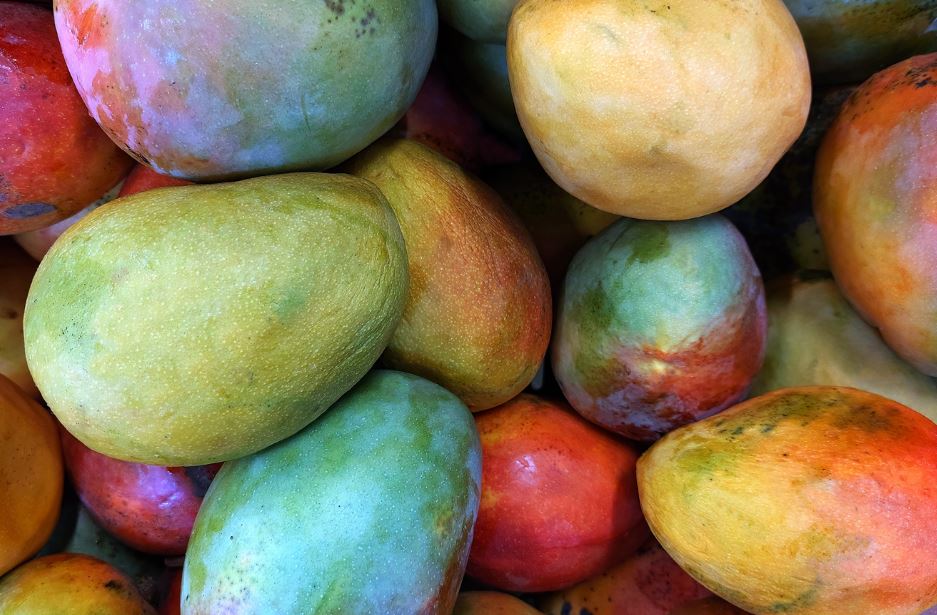
Green patches on the skin are normal for some varieties and don’t necessarily indicate unripeness, but large areas of green may suggest underripeness.
Lastly, avoid mangoes with a flattened appearance or shriveled texture, as these may be past their prime.
By being attentive to these factors, you can select mangoes that are fresh, flavorful, and at their peak ripeness.
Ripening A Mango At Home More Quickly
To ripen a mango at home, place it in a paper bag at room temperature, preferably with other fruits like apples or bananas, which release ethylene gas that speeds up the ripening process.
The paper bag helps trap this gas, creating a more favorable environment for ripening. Check the mango daily by gently squeezing it to assess its softness.
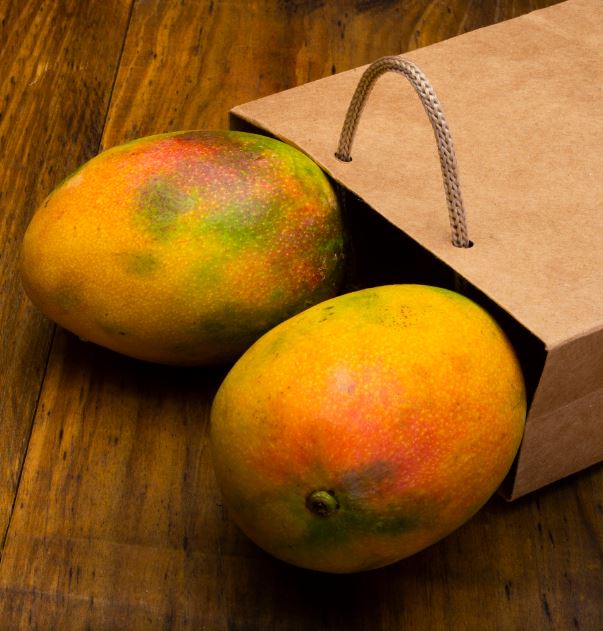
Once it reaches your desired ripeness, transfer it to the refrigerator to slow down further ripening.
Keep in mind that different mango varieties have varying ripening times, so be patient and monitor the mango regularly to achieve optimal ripeness for your preferences.
Best Way To Store Mangoes
To extend the freshness of mangoes, store them in the refrigerator once they reach your desired ripeness.
Place the whole, uncut mango in the crisper drawer, away from other fruits and vegetables, to prevent potential flavor transfer.
If you’ve already cut the mango, store the leftover pieces in an airtight container in the refrigerator.
Keep in mind that refrigeration slows down the ripening process and helps maintain the mango’s quality for a more extended period.
However, for the best flavor and texture, it’s advisable to consume refrigerated mangoes within a few days.
Tips For Cutting A Mango
To easily cut and peel a mango, start by slicing off a small piece from both ends to create stable, flat surfaces.
Stand the mango upright on one of the flat ends and carefully cut away the skin, following the natural curvature of the fruit.
Once the skin is removed, hold the mango vertically and cut along each side of the flat seed to obtain two large mango cheeks.

Dice or slice the mango flesh as needed. Alternatively, you can use a mango splitter, a tool designed to cut the fruit along its sides, leaving the seed intact.
For a quick and mess-free method, consider using the “hedgehog” technique by making lengthwise and crosswise cuts into the mango flesh without piercing the skin, then turning it inside out to expose easily scoopable cubes.
Popular Uses For Mangoes
Mangoes are incredibly versatile, and their sweet and tropical flavor makes them a popular ingredient in various culinary creations. Here are some popular uses for mangoes:
1. Fresh Eating:
Enjoying ripe mango slices as a refreshing and healthy snack.
2. Smoothies and Juices:
Blending mangoes into smoothies or juices for a naturally sweet and vibrant drink.
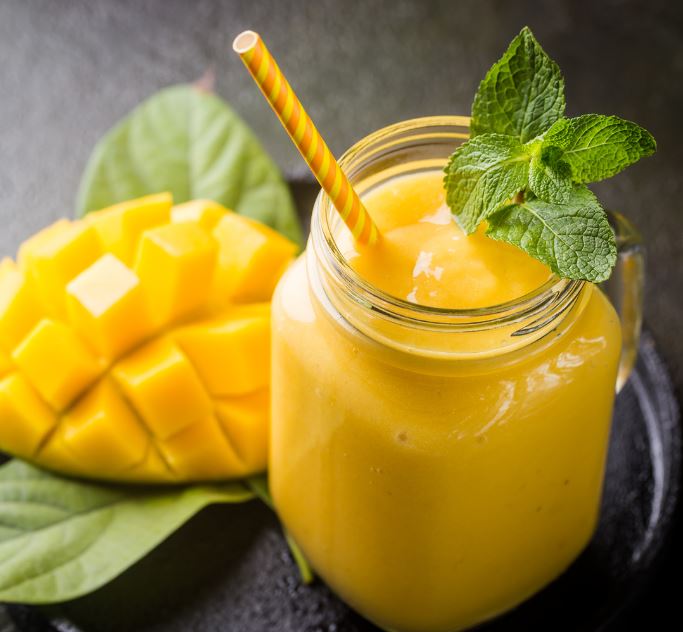
3. Sauces and Marinades:
Creating sauces or marinades for meats, poultry, or seafood using mango puree.
4. Curries and Stir-Fries:
Including mangoes in curry dishes or stir-fries for a tropical flavor.
5. Salsas and Chutneys:
Tossing mango chunks into green salads or fruit salads to add sweetness and texture.
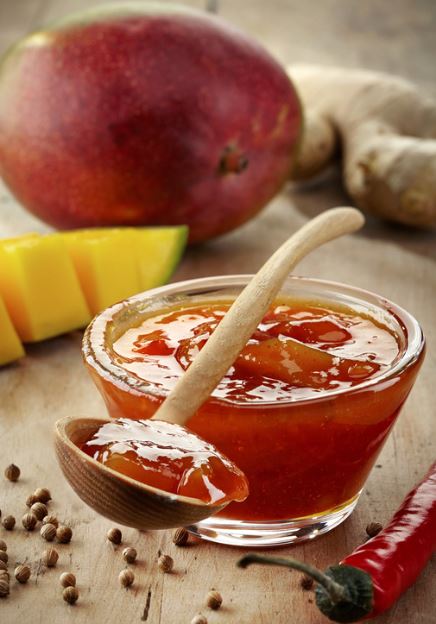
6. Cocktails and Mocktails:
Using mangoes in cocktails or mocktails for a fruity and refreshing twist.
7. Salads:
Tossing mango chunks into green salads or fruit salads to add sweetness and texture.
8. Chilled Soups:
Blending mangoes into chilled soups, such as gazpacho, for a sweet and savory combination.
9. Desserts:
Incorporating mangoes into desserts like sorbets, ice creams, puddings, and tarts.
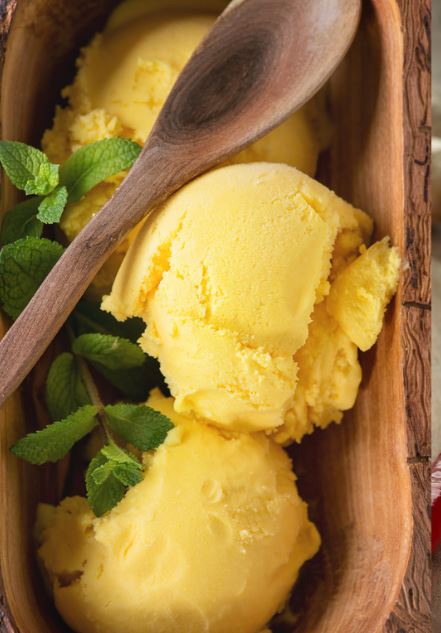
10. Grilled or Roasted:
Grilling or roasting mango slices to enhance their natural sweetness and caramelization.
11. Mango Lassi:
Making the popular Indian beverage, mango lassi, with yogurt and spices.
12. Baking:
Incorporating mangoes into baked goods like muffins, cakes, or fruit bars.
13. Dried Mango Snacks:
Enjoying dehydrated or freeze dried mango slices as a portable and naturally sweet snack.
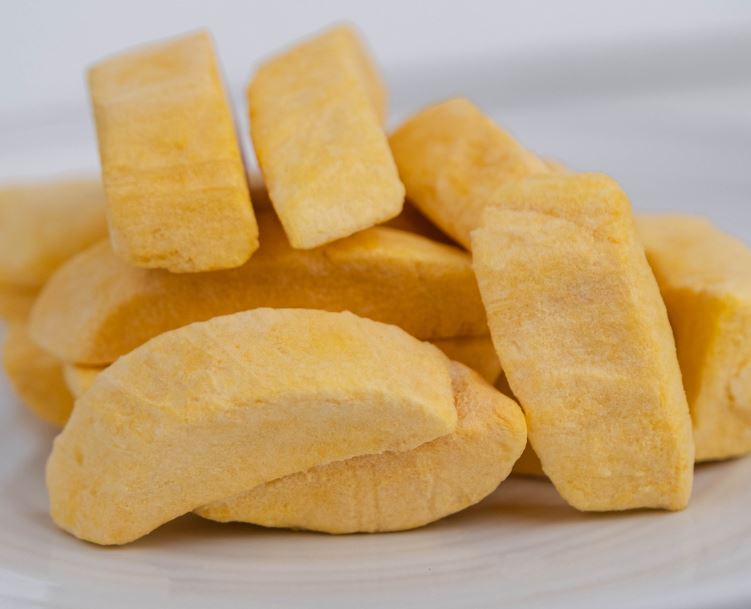
14. Mango Jam or Preserves:
Making homemade mango jam or preserves for spreading on toast or using as a topping.
15. Mango Sushi Rolls:
Adding mango slices to sushi rolls for a tropical and flavorful twist.
These versatile uses showcase the culinary flexibility of mangoes, allowing them to be featured in a wide range of dishes, from appetizers to desserts and everything in between.
FAQ’s About Mangoes
While the skin is edible, many people prefer to peel mangoes due to the tough and fibrous texture. Make sure to wash the skin thoroughly if consuming.
Yes, you can freeze mangoes. Peel, dice, and store them in airtight bags or containers for later use in smoothies or desserts.
An overripe mango may have a strong fermented smell, wrinkled skin, or feel excessively soft when gently pressed.
Yes, unripe mangoes can be used in certain recipes. They are firmer and tangier, suitable for pickles, chutneys, or savory dishes.
People with a latex allergy may experience cross-reactivity with mangoes, especially in the skin. Peeling the mango can help reduce the risk of a reaction.
Yes, you can freeze dry mangos at home to make dried mango snacks. Use a freeze dryer to preserve them for 25 years.
Check Prices On Harvest Right Freeze Dryers
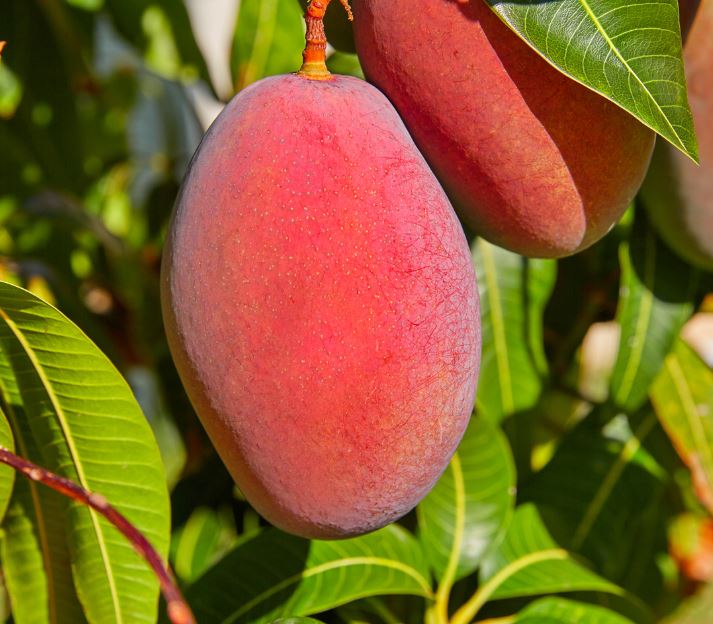
In Closing
Thank you for exploring the juicy world of mangoes with us in this mango guide! We hope these tips, answers, and insights enhance your mango experience, from selecting the perfect fruit to savoring its deliciousness in various dishes.
Whether you’re a seasoned mango enthusiast or just starting your tropical journey, we appreciate your curiosity. Happy mango adventures, and may your next mango moment be sweet and satisfying!

